ZES Project
opportunity Zones for innovation EcosystemS governance
The aim of the Zes project is to build a logical framework for prioritizing public choices at city level towards innovation ecosystem rationale.
opportunity Zones for innovation EcosystemS governance
The aim of the Zes project is to build a logical framework for prioritizing public choices at city level towards innovation ecosystem rationale.
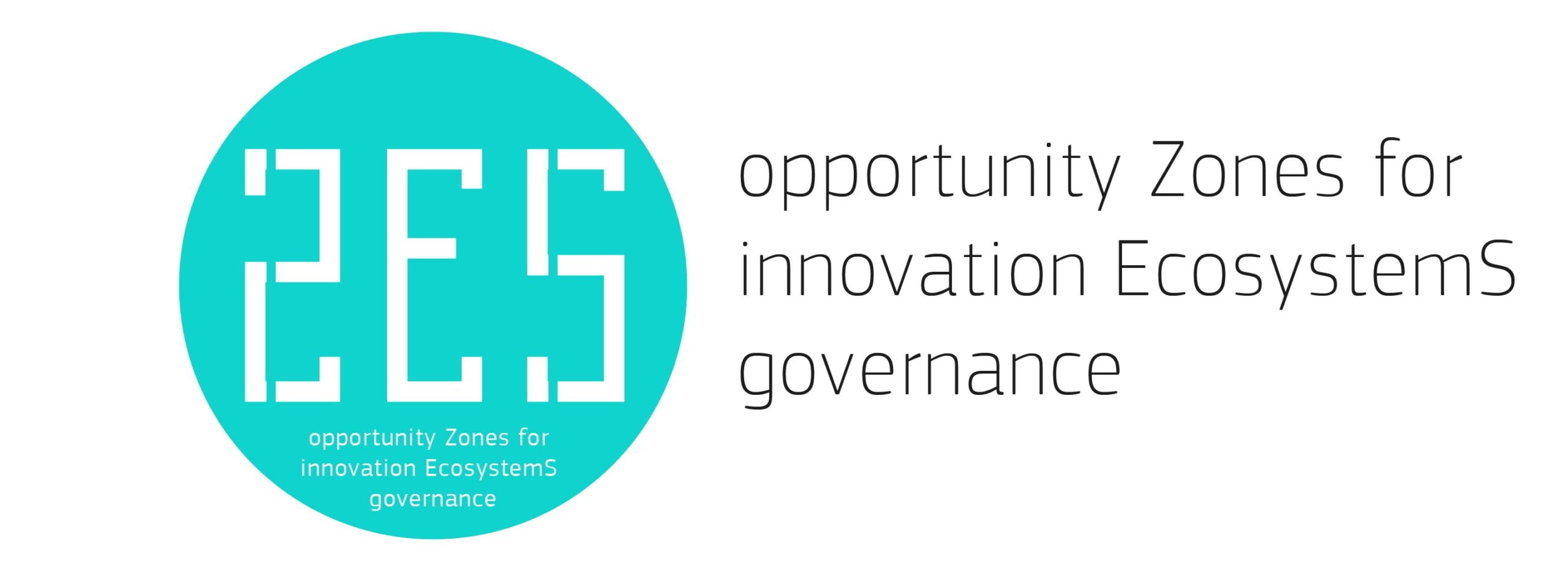
The main objective of the ZES (opportunity Zones for innovation EcosystemS governance)project is to build a logical framework for prioritizing public choices at city level towards Innovation Ecosystem (IE) rationale. The ZES project focuses on IEs governance and decision-making processes starting from the analysis of local assets – and their potentials – with respect the urban context in order to reinforce the urban dimension of S3 and of Cohesion Policy for the next programming period
The ZES project moves forward the MAPS-LED findings by investigating governance models and decision-making processes beyond the innovation-driven transformation phase characterized by local IEs, focusing on the assets closely connected with the specific assets/values of the urban context. The IE concept synthetizes the complex dynamics, connections and relationships between actors involved in innovation-oriented processes within cities.
The project is funded by the European Union’s Marie Sklowdoska Curie actions individual fellowship 2018 – Global fellowship – Horizon 2020 programme.
The investigation of the complex knowledge and innovation dynamics occurring within Innovation Ecosystem with respect the urban context can provide useful suggestions for the improvement the Smart Specialisation Strategies (S3) approach and reinforce the Cohesion Policy in a period characterized by uncertainty and severe challenges for EU regions and cities.
The specific aim is to support urban decision-making processes to create/empower local IEs closely connected with the specific assets/values of the urban context and strengthening the partnership between institutions and local communities in exploiting and valorizing local potentials by feeding a sustainable and innovation-driven development pattern.
The ZES project is expected to produce a Smart Open Data Dashboard (SODD) able to support and prioritize public choice at local/city level towards the creation or strengthening of local Innovation Ecosystem. This process is supposed to facilitate the local transition and diversification processes based on the enhancement of complex knowledge and innovation dynamics
ZES is a Marie sklodowska-Curie Individual Fellowship Research project funded by the European Union’s horizon 2020 Programme
The zes project focuses on Innovation Ecosystem governance and decision-making processes starting from the analysis of the local assets – and their potentials – with respect the urban context in order to reinforce the urban dimension of s3 and of cohesion policy for the next programming period. zes moves forwards the results of the mapsled project, providing further insights on how to generate a durable change following the smart specialization strategies (s3) approach in supporting innovation-led urban development.
The ZES project presents a significant levels of interdisciplinary interaction, contamination and synergy activation among complementary fields of study working under an advanced strategy of training and research in the field of Economics, UrbanStudies and Urban Informatics areas. The originality and innovative aspects lie on the analytical tools and techniques that the Researcher selected for the analysis of Innovation Ecosystems. The training activities on the Urban Informatics field provideinsights on the research topics through GIS techniques and spatial data analysis.
The area of Urban Informatics focuses on the analysis of urban systems by leveraging novel sources of data with possible applications in four areas “(1) improved strategies for dynamic urban resource management, (2) theoretical insights and knowledge discovery of urban patterns and processes, (3) strategies for urban engagement and civic participation, and (4) innovations in urban management, and planning and policy analysis”.
The adoption of urban informatics techniques and tools allow to better identify and investigate IEs assets and updated the traditional tools and techniques adopted for the analysis of urban phenomena providing the necessary knowledge and skills to the ER in developing the Smart Open Dashboard.
These methodologies are becoming increasgly relevant in the urban studies field allowing to set flexible tools to respond timely and accurately to the fast societal socio-economic transformations
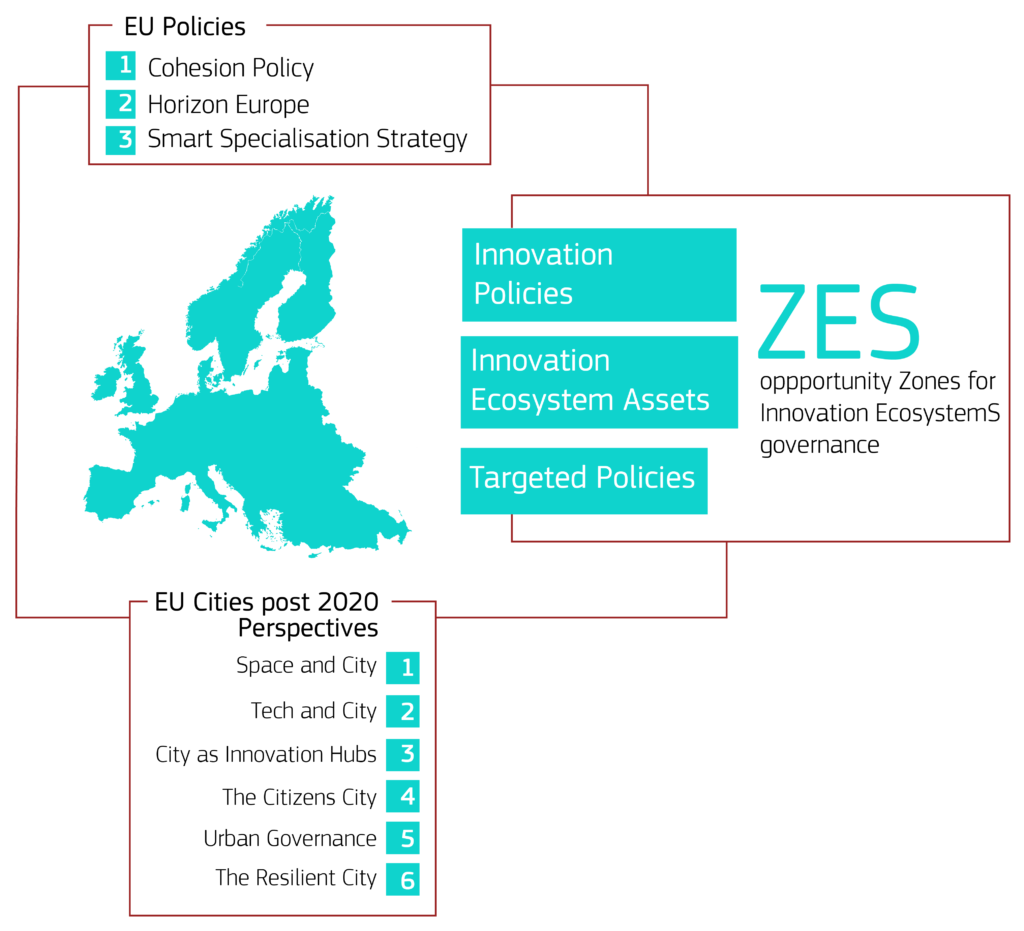
During the first and second years of the action, the project activities have focused on two main aspects. The first was related to the urban dimension of the innovation ecosystem, intended as the urban govern support to create or strengthen the innovation ecosystem, and the second related to the interaction with the context.
The first WP related to research focused on the analysis of innovation-oriented policies centered on IEs, the governance urban models (structures, actors) adopted and the assessment frameworks defining the methodological background (indicators grid) for the activities to carry on during this step: Literature review on the innovation-oriented policies and the urban governance models (governance structures, actors), their main characteristics and the urban decision-making processes centered on innovation ecosystems; and Analysis of IEs assessment frameworks. Starting from the analysis of the existing IEs frameworks this step provides the grid of indicators for the IEs analysis and the necessary elements for the identification of the key assets, the complex relationship among actors and the innovation dynamics with respect the city/urban context and the strategies adopted finalized at the development of the grid of indicators to map out IEs assets and dynamics with respect the city context.
The literature review conducted in this direction has revealed two interesting insights: the attention of scholars on the innovation ecosystem concept from a complexity perspective and the identification of a set of “urban” innovation ecosystem concept/assessment frameworks. Studying the innovation ecosystem from a complexity perspective had two relevant implications for research activities. First, the innovation ecosystem as Complex Adaptive Systems (CAS) shows specific abilities, making them suitable to address contemporary challenges. For example, self-adaptation, self-organization, transformation are just three abilities that can respond to the current need of cities for a green and digital transition towards resilience and sustainability for the post-pandemic city. Second, the ecosystemic methodological research framework (Phillips and Ritaala, 2019) sheds light on the interactions of the innovation ecosystem with the context from an evolutionary perspective. However, such interaction is strictly focused on a temporal dimension, not paying attention to the spatial interactions of the innovation ecosystems elements with the other actors in the urban context. So, the territorial research perspective provides the ground to better investigate the topic, identifying the lack of innovation-oriented policies and the main characteristics of the local decision-making process for their creation or development.
This element opens the floor for the second interesting insight deriving from the literature review. Understanding the urban dimension of the innovation ecosystem also means finding out the urban innovation ecosystem characterization at urban level. In this direction, starting from the MAPS-LED (Horizon 2020 MSCA-RISE) project’s findings, a set of innovation ecosystem concepts/assessment frameworks considering the urban dimension has been identified and analysed: the innovation district/ecosystem (Katz and Wagner, 2014; Vey et al., 2017), the city innovation ecosystem (Geek et al., 2016), the urban technology innovation ecosystem (Mulas et al., 2016), the Place-based innovation ecosystem (Rissola et al., 2018, 2019, 2020), and the economic cluster concept (MAPS-LED). Furthermore, these concepts assessment frameworks have been identified as coherent with the action topic based on the urban governance processes supporting the innovation ecosystem dynamics. Starting from the work conducted with the MAPS-LED project (Horizon 2020-MSCA-RISE), which sheds light on the connection between innovation and knowledge dynamics and urban transformation in cities, the research activities have identified the main characteristics of the urban innovation ecosystem focusing on its urban characterization. Specifically, Innovation ecosystems’ assets concerning the context have been identified: economic, physical, and networking. To identify and map these assets in the case study area, open, official, and publicly available data have been used.
The second WP related to research activities focused on the analysis of IEs’ assets with respect the urban context characteristics. The selection of a set of indicators to investigate and map IEs assets is the key element to comprehend how innovation-oriented dynamics affect the social, economic and physical dimension. The activities focused on the:
The analysis of the innovation ecosystem concepts/assessment frameworks has identified three main assets to consider: economic, physical, and networking. The first comes from the results of the MAPS-LED project, which has spatialized the activities of economic clusters in the case study area. According to the innovation ecosystem concepts analysed, Clusters can be considered economic assets of the ecosystem at the urban level; they do not concentrate businesses but activate complementary synergies and dynamics in the urban environment supported by public policy actions. The second asset category- the physical assets – is represented by physical space where activities are host. Start-up location and concentration have been considered a proxy for the identification of this asset. Third, the networking asset relates to the innovation spaces that foster networking activities for the ecosystem’s actors. These spaces are incubators and accelerators, and co-working spaces. These three categories have been considered for their ability to activate networking activities beyond the nature of the space itself. Incubators and accelerators are spaces dedicated to incubating and accelerating start-ups and small businesses. However, they activate a set of complementary activities for all the actors operating in these spaces, such as conferences, meet-ups, networking, cafè, venture capital meetings, etc. The same happens for co-working spaces. Finally, the urban innovation ecosystem has been mapped out, generating dynamic maps of innovation ecosystems assets for the case study area, the cities of Boston and Cambridge. Such dynamic maps include the relationship with the zoning of the two cities, given the relevance of the mixed-use zoning approach in supporting the innovation ecosystem urban development.
Given the mutated policy context, the innovation ecosystem concept has been framed in the resilience and transition-oriented policy framework to understand how the creation or reinforcement of urban innovation ecosystem can support cities’ transition. The activities focused on the economic development and planning nexus in the case study area (Boston and Cambridge, USA). Starting from the Federal to the local level, economic development and planning documents have been considered to understand how the innovation ecosystem is created or supported in the context of resilience-oriented development. This process revealed how the cities of Boston and Cambridge started resilience-oriented planning many years before the pandemic and specifically after the economic downturn of the 2010s. The Federal Government approach, concerning the topics of the project, is characterized by a multi-level governance perspective to facilitate local economic development. However, the Opportunity Zones tool, introduced by the US Congress to revitalize urban economic distressed areas, reveals the marginal role of cities’ administrations in the planning and managing such zones from the economic development perspective. This gap is a relevant finding given the recent developments of the academic debate on the need to transform opportunity zones into innovation zones following the innovation ecosystem rationale. Introducing this approach in Europe for small and medium cities can support more effective implementation of Smart Specialisation Strategies (S3). Indeed, cities’ role can shift from mere regulative authorities to proactive actors in planning, orchestrating, and managing city knowledge and innovation dynamics through urban governance mechanisms. The opportunity zones concept allowed to provided coherence and consistency of the data collected.
By merging the opportunity zones concepts with the urban planning strategies (Comprehensive General Plans) designed by the cities of Boston and Cambridge, it was possible to identify two urban areas of inquiry to understand where and how the two cities are managing the transition towards a resilient urban development. Furthermore, this process allowed also to identify a preliminary list of stakeholders to inter-view and to formulate the key research questions to find the answer. The next step will consist in the analysis of the urban areas selected by identifying the key policy action.
The third WP related to research activities focused on the in-depth case study analysis of the Boston area (city of Boston and Cambridge, USA). The case analysis has been conducted by following the Driving for Urban Transition approach (JPI Urban Europe), which identifies three main thematic areas of development for the investigation: energy district, sustainable mobility, and circular economy. These thematic areas are crossed horizontally and vertically from urban innovation ecosystem capabilities. UIEs, indeed, thanks to new technologies development and the ability to link global and local knowledge dynamics, can provide suitable solutions for addressing key urban issues. Therefore, following the urban informatics principles, activities have focused on the following aspects:
The research activities conducted during this WP allowed to better comprehend UIE dynamics and the role of urban planning and governance in supporting urban transition process. Specifically, from the case study analysis it has been possible to identify the main elements argued to driving transformative development processes. First of all, the multi-level governance perspective, through which Federal, regional, State, Metropolitan, and local authorities share visions, objectives, and plans, is one of the main elements resulted. All the public authorities involved in the economic development planning cooperate and design strategies and plans that are encouraged and opportunely adapted to local context need. This aspect introduces the second main element: the importance of urban planning and governance. Both the city of Boston and Cambridge have designed – and already implementing – comprehensive development plans aimed at foster resilience and transition towards sustainability. The third element is related to the zoning code and ordinances. The case study analysis outlined the ability of both cities administrations to adapt their zoning practices to the need for climate changes mitigation and to foster resilience. Such approach is facilitated by the mixed-use zoning, which through density increase, is supposed to reduce pollution, soil, and resources consumptions, and facilitate sustainable mobility options. The fourth element resulted is the importance of the creation of a civic digital ecosystem.
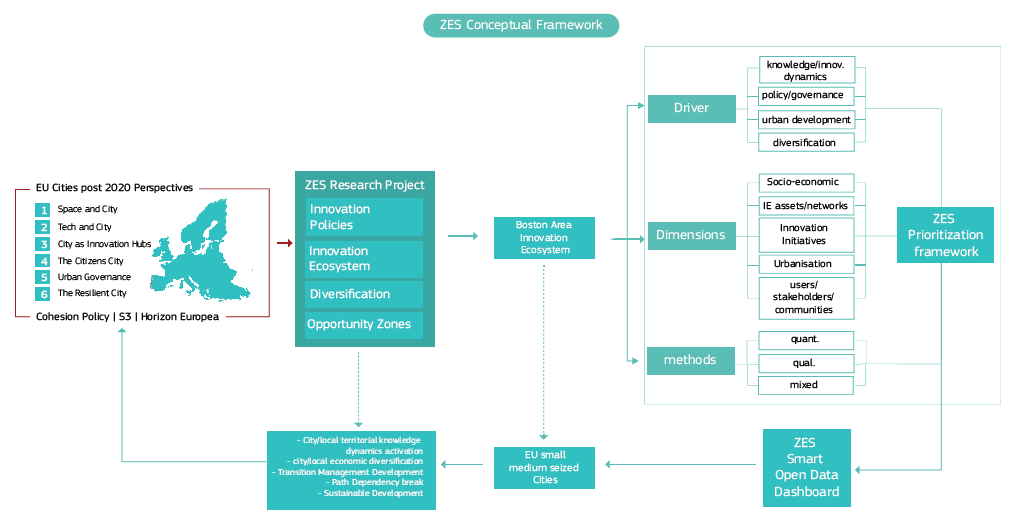
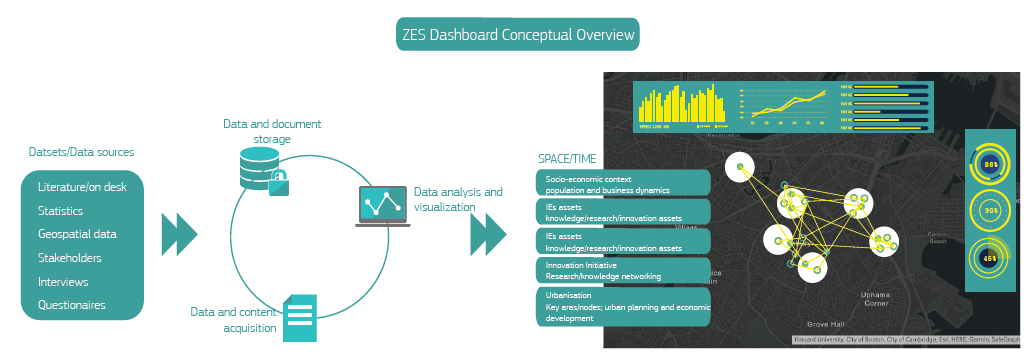




PAU Department
Università degli Studi Mediterranea of
Reggio calabria, IT

Department of Economics
Northeastern University of Boston, USA
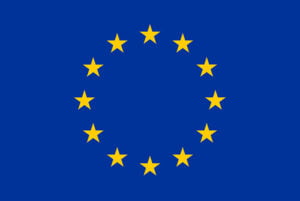
This project has received funding from the European Union’s Horizon 2020 research and innovation programme under the Marie Sklodowska-Curie grant agreement No 846144.
